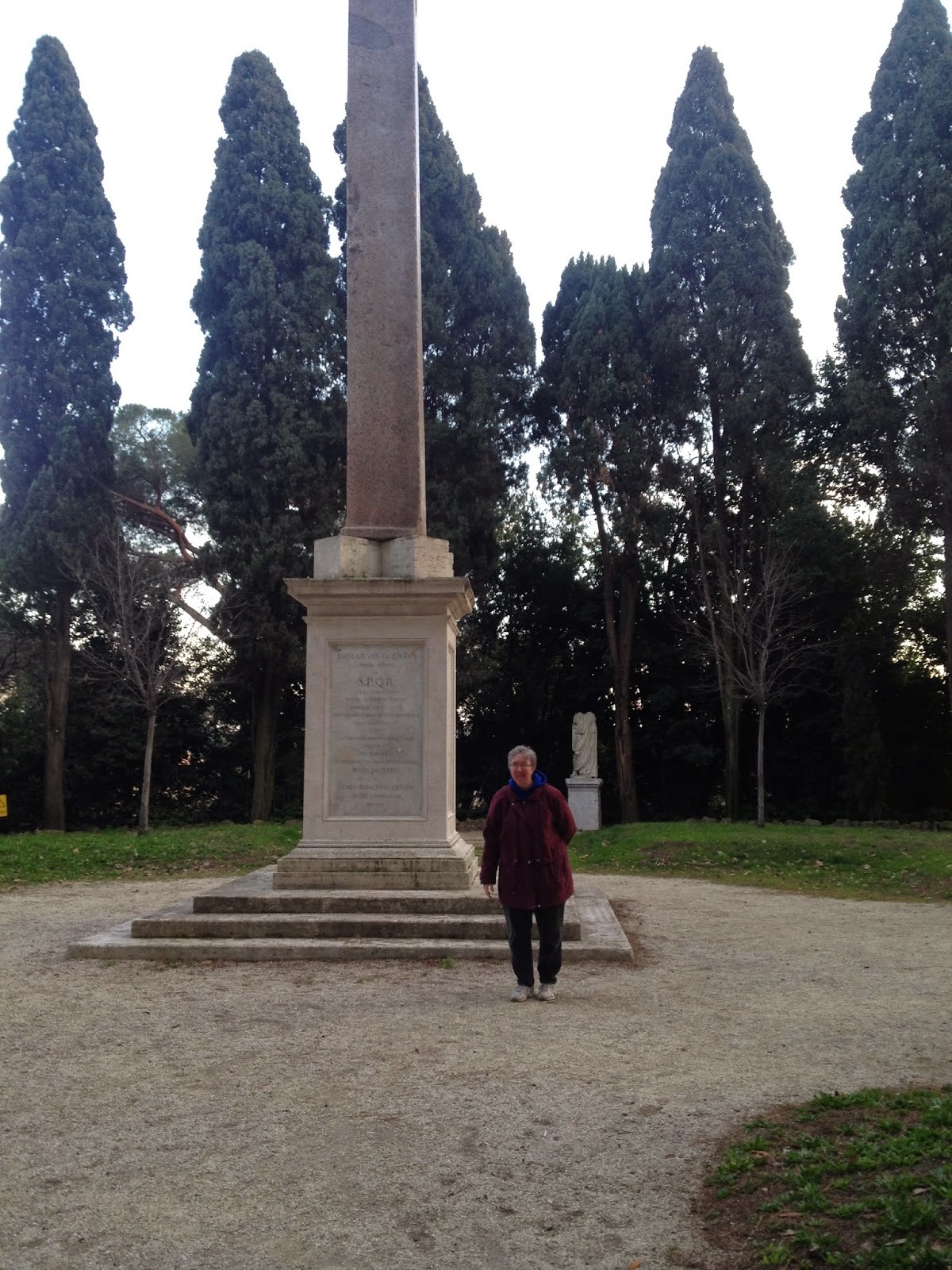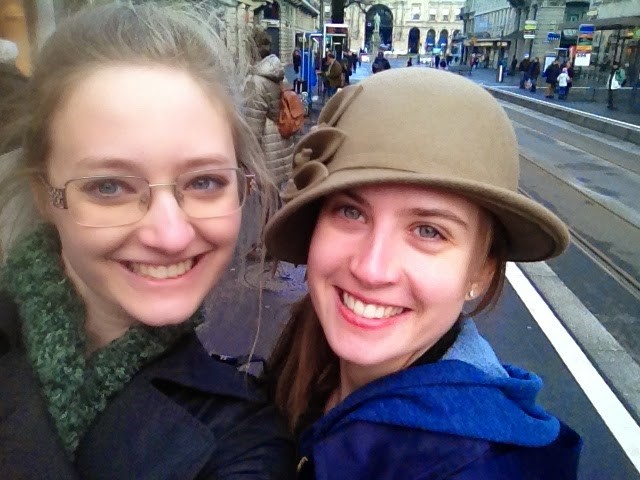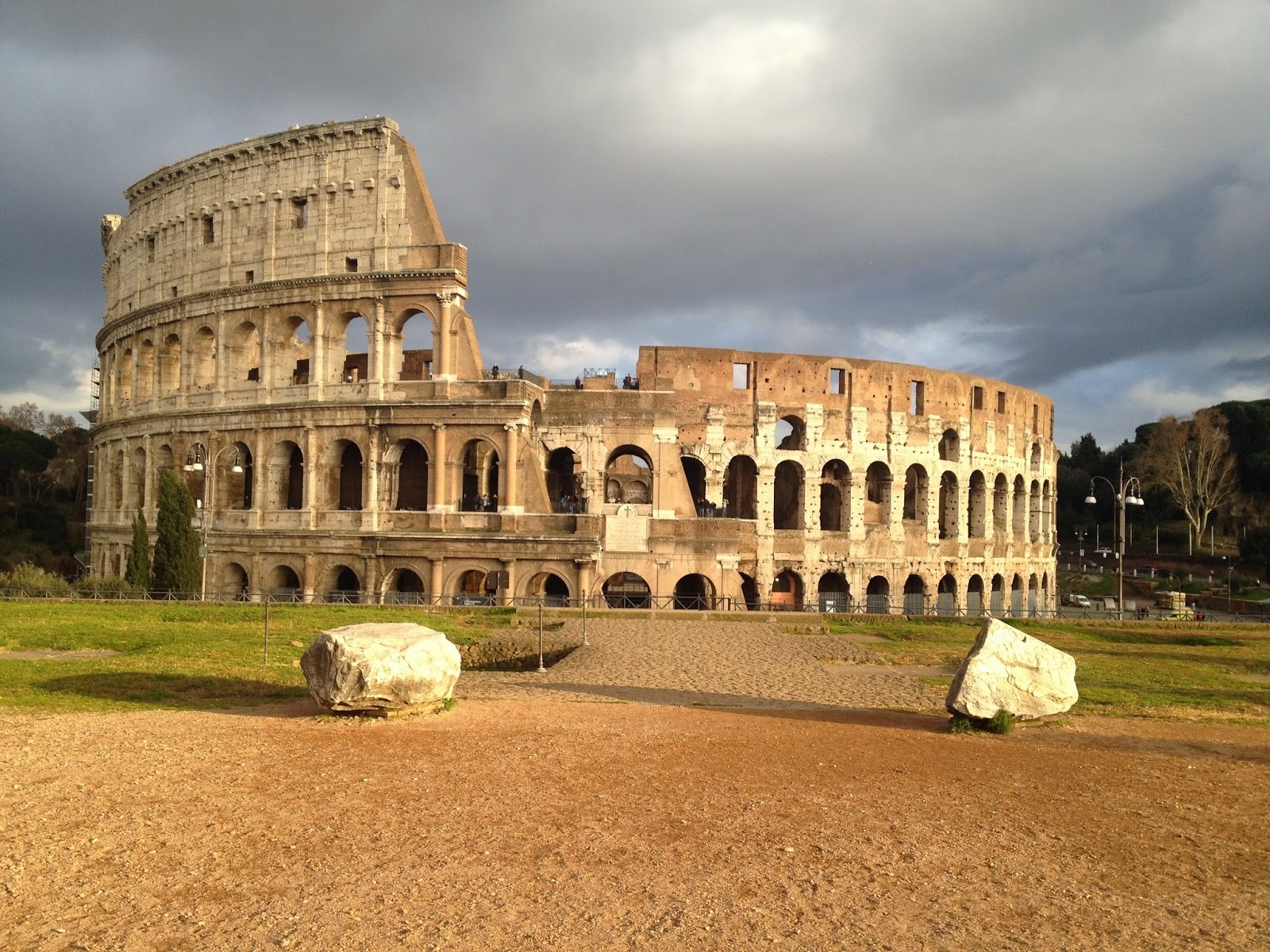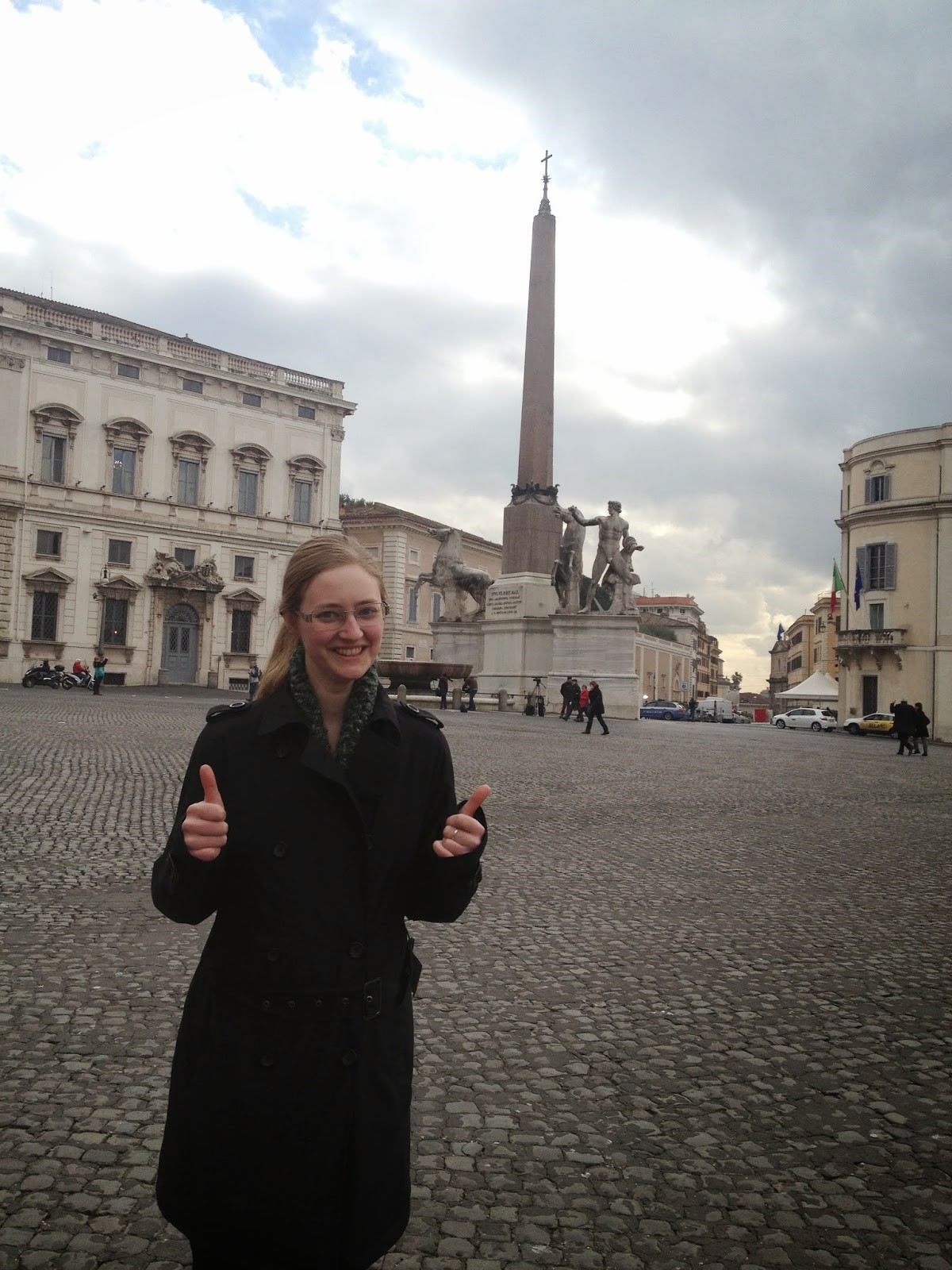Diana’s Oblelisk Quest in Rome
January 26, 2015
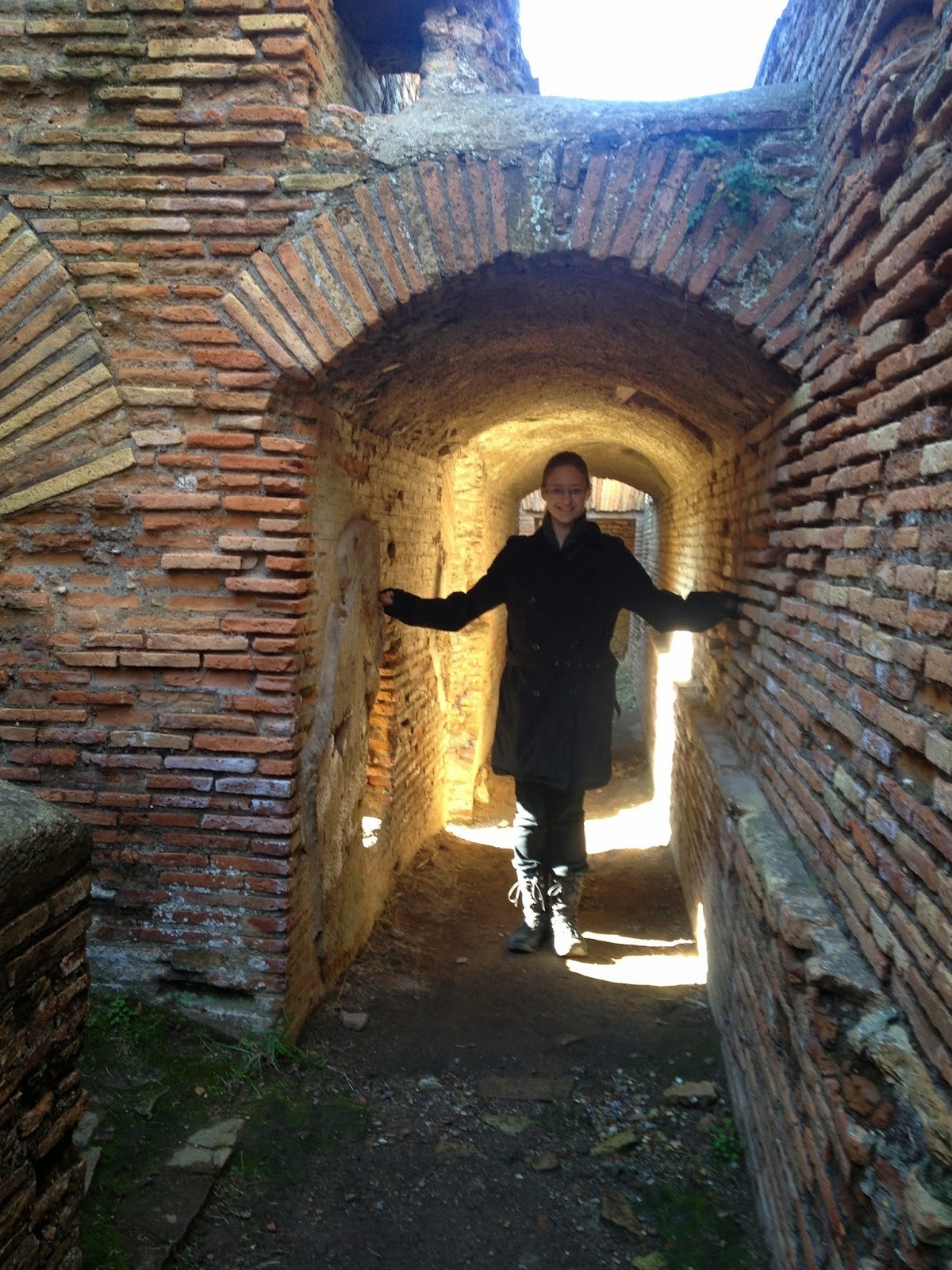
Diana Stanley is a Museum Volunteer studying abroad in Europe until June. She's writing as a Field Reporter while she travels. Follow our blog to receive her updates throughout the coming months.
By Diana Stanley, Field Reporter
The poet Robert Browning once said, “Everyone sooner or late comes round by Rome.” Rome is an immense city where ghosts of grandeur lurk in massive ruins next to bright orange and yellow modern buildings. The city is alive and full of people, locals and tourists, attempting to navigate twisting streets whose names change at random. The person next to you on the bus could be Italian, British, or a pickpocket gunning for your watch.
|
|
|
Diana starts on her adventure. |
I spent a week in Rome and barely scratched the surface. However, only a day into my trip I made a goal for myself. I wanted to see all thirteen obelisks of Rome. The ancient capital boasts of having more ancient obelisks than anywhere else in the world, including Egypt where most of them come from. When Rome conquered Egypt after the fall of Marc Antony and Cleopatra, they started taking its obelisks home to make monuments out of them for some of the city’s copious piazzas. Sometimes, such as the case of the obelisk brought by Diocletian, the stone was meant to be in front of an Egyptian temple in the city. The Romans themselves later made five additional obelisks. It is important to note that not all the obelisks the Romans made or took from Egypt have survived, nor are they in their original placements in the city.
I wish to thank the invaluable aid of my fellow adventurer Jessie Logan and all the ASC religious who fed and gave us a roof over our heads, especially Sr. Susan Welsby.
Throughout the Middle Ages and Renaissance, authorities moved the obelisks to commemorate landmarks they felt were more important. Each obelisk was named for a variety of reasons. Minerveo was named for its piazza. Dogali commemorates a battle its monument was made for.
The first obelisk I spied was in front of the Cathedral of Santa Maria Sophia Minerva. It is a curious small thing and immediately caught my eye. Its base is a marble elephant designed by Bernini on the orders of Pope Alexander VII. Not knowing how attached I was going to become to obelisks, I hurried onto to my real destination, the Pantheon. Yet in front of that massive monument was yet another obelisk. Called the Macuteo, it was made in the reign of Rameses II for the Temple of Ra in Heliopolis.
In the afternoon, Jessie was not feeling well so I struck out on my own with Sr. Susan as my guide. She took me to the Basilica of St. John Lateran, named for the apostle and the noble Roman family who gave land and money for the original church. Low and behold, another obelisk stood proudly in Piazza in front of the church. This obelisk is the tallest of its brothers and was brought to Rome in the late days of the empire. Seeing the Lateranense made me want to find the rest. I had no idea how many obelisks there were but I had almost a week. I thought surely it would be no trouble to fit it in.
As if to prove my inner mental point, about an hour later of walking and exploring, we reached the Piazza del Populo, the Plaza of the People. John Lateran’s obelisk might be the tallest, but the Flaminio commands the most attention. The Piazza is huge and full of sightseers and sellers of cheap merchandise. Flaminio rises above them all in the heart of the square.
I resumed my quest the next evening when Susan asked me if I would like to see the obelisk at Celimontana. Villa Celimontana is a public garden about a twenty minute walk from the ASC convent. Originally owned by a noble family who donated it to the city, it is the home of the Italian Geographical Society. Rarely visited by tourists, it is a favorite hidden green space visited by local families. The obelisk it houses, Mattieano, is also obscure, partially because it was lost, found, and reconstructed several times before finding its permanent home in 1820. Originally the twin of the obelisk in front of the Pantheon, the loss of so many pieces over the years resulted as it becoming the smallest obelisk in Rome. Villa Celimontana was my favorite setting for an obelisk because it was green and peaceful, if a bit overgrown!
|
|
|
Sr. Susan next to the Villa Celimontana obelisk. |
I saw my sixth obelisk early the next morning. Jessie Logan and I wanted to see Pope Francis before he headed off to the Philippines so we went to the Vatican to see him lead the Angelus at noon. As we got there really early to beat the crowds, I had plenty of time to admire the Vaticano, the obelisk in the center of St. Peter’s Square. Many ignorant pilgrims have believed over the years that the monument had some Christian connotation, but it was really brought to Rome by the Emperor Caligula. I can understand why the pilgrims got confused. The inscription on the base talks about Christ the King. While it is considered an “Egyptian” obelisk, it was raised in Alexandria on the orders of Emperor Augustus which is why it has no hieroglyphics. Significantly, it is the only obelisk which has not fallen or been lost in its history so I saw the most complete obelisk after seeing the most broken.
Unfortunately my search was forced to halt a couple days while we explore other parts of Rome, but I picked it up again a few days later. Jessie Logan and I were on our own but we had a map and instructions from Sr. Susan. We were going to get all the obelisks in one swoop. What could go wrong, right? Right?
At first, everything seemed to be going well. We started with Pinciano on Pincian Hill. The Hill is part of a large green garden space similar Villa Celimontana but with better maintenance and weeding. The garden itself is next to the Piazza del Populo, though like its name suggests, at the top of an exceptionally large and steep (at least it feels that way to climbers) hill. The obelisk is hidden away at the back. It was my first “Roman” obelisk which ironically also has hieroglyphs. Like the others, it has moved a great deal from its original placement by Emperor Tiberius. It found its current spot in 1822. I guess Pope Pius VII really liked figuring out places for obelisks.
|
|
|
Diana and Jessie about to get lost on their search for obelisks. |
Our next stop was the Spanish Steps. Its obelisk is also Roman. The Sallustiano got its name from its decorative purpose in front of the Gardens of Sallust at the time of its making. It was commissioned during the time of Emperor Marcus Aurelius and was a smaller copy of the obelisk in the Piazza del Populo. The Sallustiano was lost and refound in the 18th century. For a few decades it was displayed next to the Laternanense until it was erected by Pope Pius VI (I’m telling you, the Pius’ have a thing about moving obelisks).
It was here the path got a bit twisted. Our next stop was supposed to be the obelisk in front of the Baths of Diocletian and then the Esquiline obelisk behind the Basilica of Mary Major. Both are near the train station Termini and according to our map, it should have been a simple matter of finding them. It was not. A long and lost story short, while we did find both obelisks we did not have time to find the rest and trudged our way back to the convent.
Our last morning in Rome, we explored the Coliseum. Jessie and I finished earlier than expected and we decided to try to hunt down the last few obelisks. First, we headed up to the Piazza di Montecitorio to see Solare, the last of the eight Egyptian monuments. This obelisk was brought with Flaminio to be part of a cool sundial system in ancient Rome and placed in its current piazza by Pope Pius VI (there he goes again…). We didn’t stay long, news crews seemed to be gathering and there were more “Policia” around than usual. Not thinking much of it, we hurried on to the Piazza Navona. Along the way we walked past the Pantheon where someone was giving a speech.
|
|
|
They had perfect weather for photos of the Coliseum. |
Soon enough we reached Navona and gazed at the masterpiece. The actual obelisk, Agonalis, is not much different from the rest of the obelisk but the base is spectacular. Like the obelisk in Sophia Minerva, it was designed by Bernini. Unlike Minerveo, the base is an enormous fountain. Rome almost lost this obelisk in the 17th century when an Englishman tried to buy it and even paid a deposit. The pope of the time said no which I appreciate today.
I had one final obelisk to find. The Quirinale sits on top of a ridiculously steep hill. It was made with the obelisk behind Mary Major for the tomb of Emperor Augustus. It was moved to the piazza by Pope Pius VI (who else would have moved it) in the 18th century. I raced up the peak as quickly as my tired legs could take me and I noticed more news crews and policemen. I ignored some bewildered stares as I rejoiced in my victory.
|
|
|
This was Diana's last stop on her hunt for obelisks in Rome. |
Proud of my accomplishments, I went back with Jessie for lunch. That night at dinner I found out the head of the Italian Parliament had officially resigned that day after nine years in office. The policemen and the speech in front of the Pantheon, were all explained. Considering how many news crews were around I wonder if I was captured in a shot or two myself. I had unintentionally become part of the story. Perhaps when you look at history, history looks back? Either way, I had a great time exploring or uncovering some of Rome’s overlooked treasures.

